Designer Jacqueline West says the costuming of Swedish actor Rebecca Ferguson's Lady Jessica takes a more modest turn in the Dune sequel
In the first Dune film, costume designer Jacqueline West fashioned an entire sci-fi universe through Lady Jessica’s gauzy veils on Caladan and the Fremen’s utilitarian suits on Arrakis. This time around, for Dune: Part Two, which hits theatres in March, she had an even larger undertaking. “All of the worlds are much expanded in Dune: Part Two,” West tells Vogue. “We had our hands full.”
The sequel picks up where Denis Villneuve’s first film left off, following the messianic Paul Atreides (Timothée Chalamet) and his Fremen love interest Chani (Zendaya) as they avenge his father, Duke Leto’s (Oscar Isaac) murder and try to stop the horrific future he sees in his clairvoyant dreams. West commissioned a globe-spanning team to help bring the growing Dune universe to life, from the armour in Budapest that outfitted the Harkonnens, to the London printer that decorated Lady Jessica’s Fremen robes, and the shoppers who combed markets across the Middle East for jewellery.
For the sequel, one group that West focused much of her attention on was the Bene Gesserit—an all-powerful sisterhood. While Lady Jessica (Rebecca Ferguson) and Gaius Helen Mohiam (Charlotte Rampling) represented the mystical group in the first film, Dune: Part Two introduces the audience to new Bene Gesserits: Princess Irulan (Florence Pugh) and Margot, Lady Fenring (Léa Seydoux). With the two new members, West was given the opportunity to expand from the original characters and unite the multi-planetary sisters through their wardrobe.
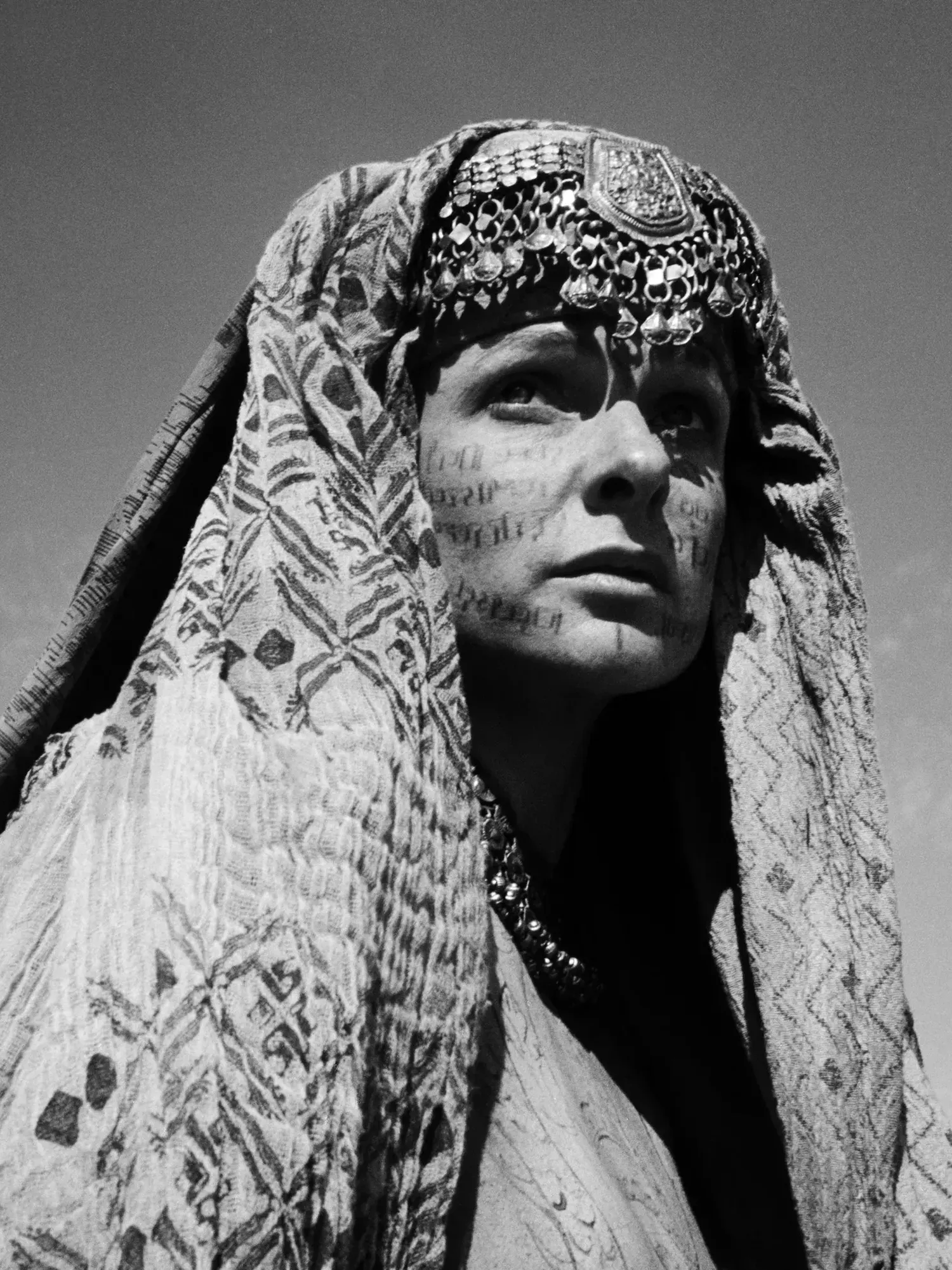
Rebecca Ferguson as Lady Jessica.
The costume designer was particularly inspired by the Tarot (a love of which she credits to her Berkeley roots), especially the Queen of Swords, when costuming the Bene Gesserits. “I noticed that when I was using the Tarot cards, there’s a certain shape that evokes a holiness all through,” she says. She likens this piousness to Medieval paintings by Giotto di Bondone and the Virgin Mary – all of which are linked by their head coverings. West, who attended Catholic school as a child, was captivated by the nuns and their habits. “I remember seeing the nuns all walk down the corridor together and their habits flying as they catch the breezeway outside,” she says. “I love that image and I tried to recreate that through Dune Two with silhouettes.”
While the Bene Gesserit is a religious organisation, West notes that she does not draw solely from Catholicism or Islam, but an amalgamation. “I think that would happen in Dune, 11,000 years from now, is that it would be a conglomerate of things that survived,” she says.
Related: Rebecca Ferguson just revived this archive haute couture look for the 'Dune: Part Two' red carpet
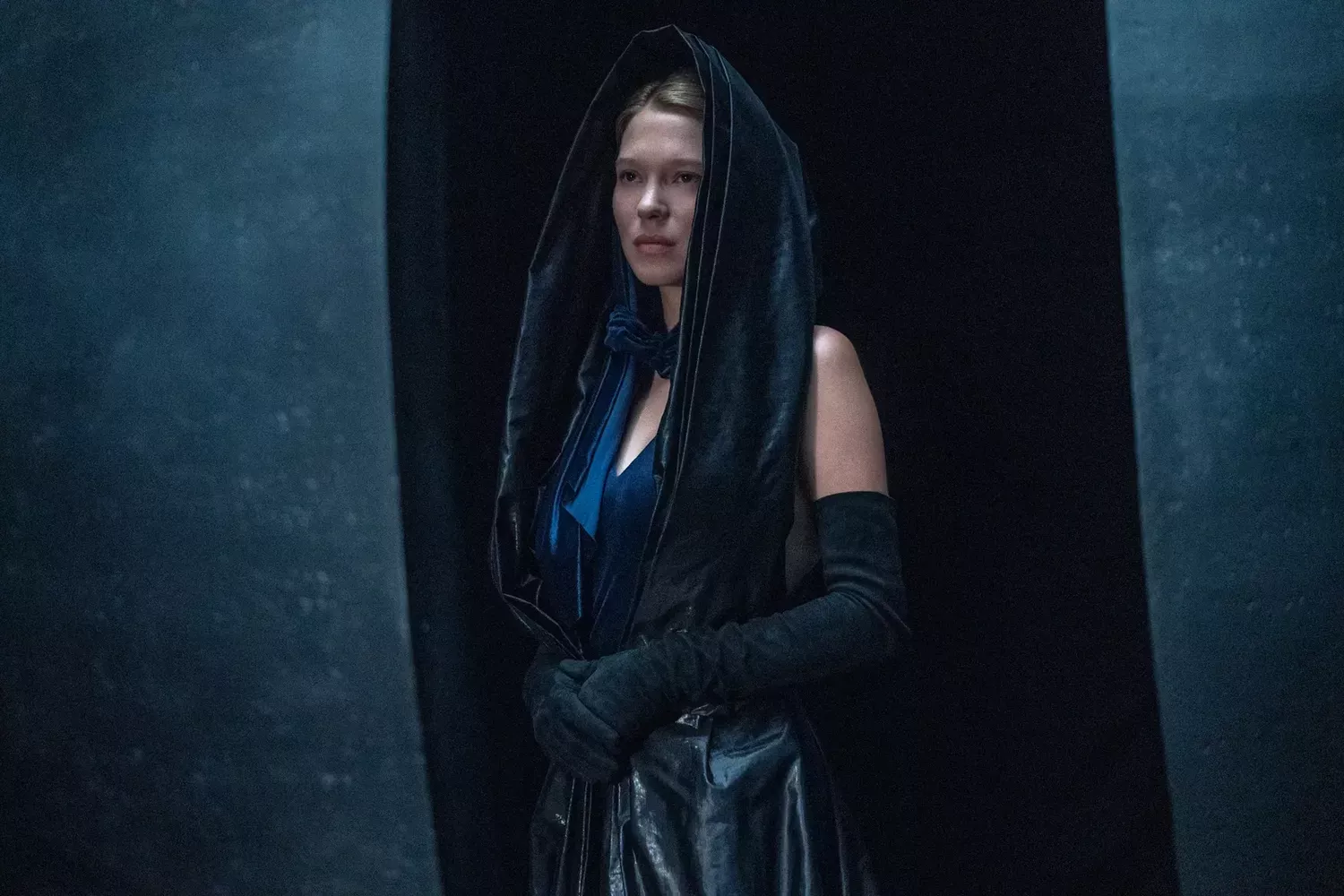
Léa Seydoux as Margot, Lady Fenring . Photo: Niko Tavernise
Each member of the Bene Gesserit, while sartorially connected through a shared silhouette, is able to show her social station with her dress. Lady Jessica sees the most stark transformation over the course of the two films, beginning as Duke Leto’s concubine and becoming a Reverend Mother on Arrakis. Embedding with the Fremen, Jessica’s costuming shifts from the resplendent, sheer and beaded pieces from the first film to a more modest wardrobe as she embeds with the Sietch. “I wanted to keep Lady Jessica quite regal, but yet in more humble fabrics, not the fancy fabrics I used on her in Dune One,” West says. Still, her costumes were far from simple. West called on costumer Matt Reitsma to hand-print the Fremen alphabet onto Lady Jessica’s robes.
Ferguson’s Jessica cuts a stark contrast from Margot, Lady Fenring. Seydoux is pictured in a velvet, jewel-toned habit-esque covering. “You really see that with Lady Fenring, though her style is much more [ladylike], more luxe. They have that one silhouette that’s very nun,” she says. “Lady Fenring’s is one of my favorite costumes of the movie for its simplicity. She looks so rich, but yet she’s still a nun. I relied on old Balenciaga for my inspiration there.”
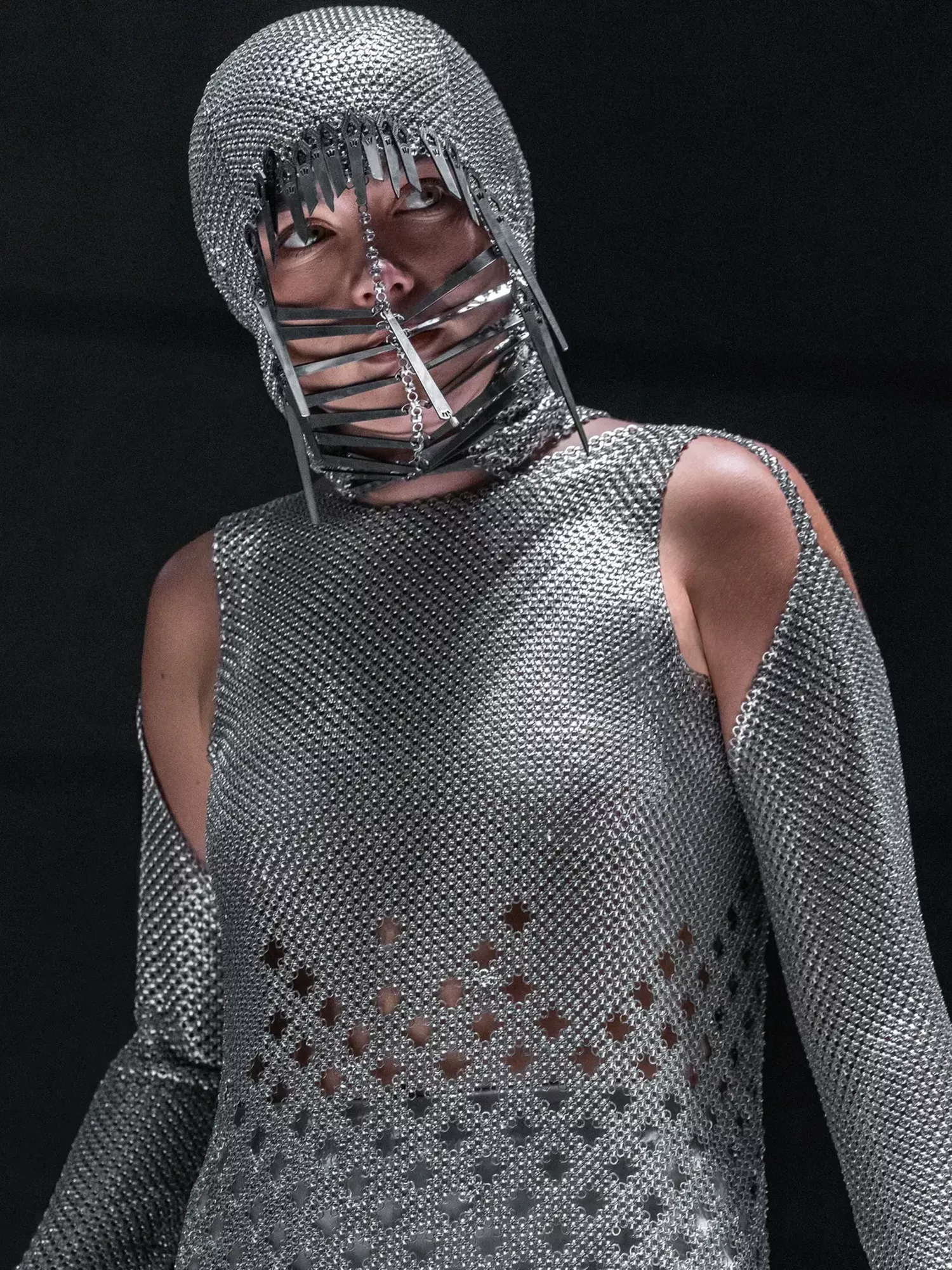
West referred to Princess Irulan as “the warrior princess”. Photo: Niko Tavernise
But the real diversion is Pugh’s Princess Irulan, whom West describes as the film’s voice of reason. To that end, she wanted to eschew the grand headpieces in favour of a more subtle nod to her Bene Gesserit roots. Irulan is often seen in smaller, metallic headpieces, which West likens to armour. “She’s the moral compass in Dune Two. [The Bene Gesserit have] been assigned to control the future and make it go on a certain path. She sees through that and she’s playing the long game,” she says. “She’s seen beyond the manipulations of Bene Gesserit, so I kept her out of that a bit.” Still, she managed to incorporate the nun look into Pugh’s costume. “I remember when I was a little girl, how the nuns’ habits framed their face. I tried to do that with her, to keep a certain aspect of the Bene Gesserits without giving her the shape, the Virgin Mary-esque mantle,” she says. “I thought I could do that best with headdresses.”
The new film also introduces an expanded view of the Harkonnen’s world, including the addition of Austin Butler as Fedy-Rautha Harkonnen, the ruthless, blood-thirsty nephew of the Baron. Perhaps looking to create a new iteration of the villain, or maybe just inspired by Butler’s turn as Elvis, West says: “I had to create a Fayd-Rautha that would be a rock star.”
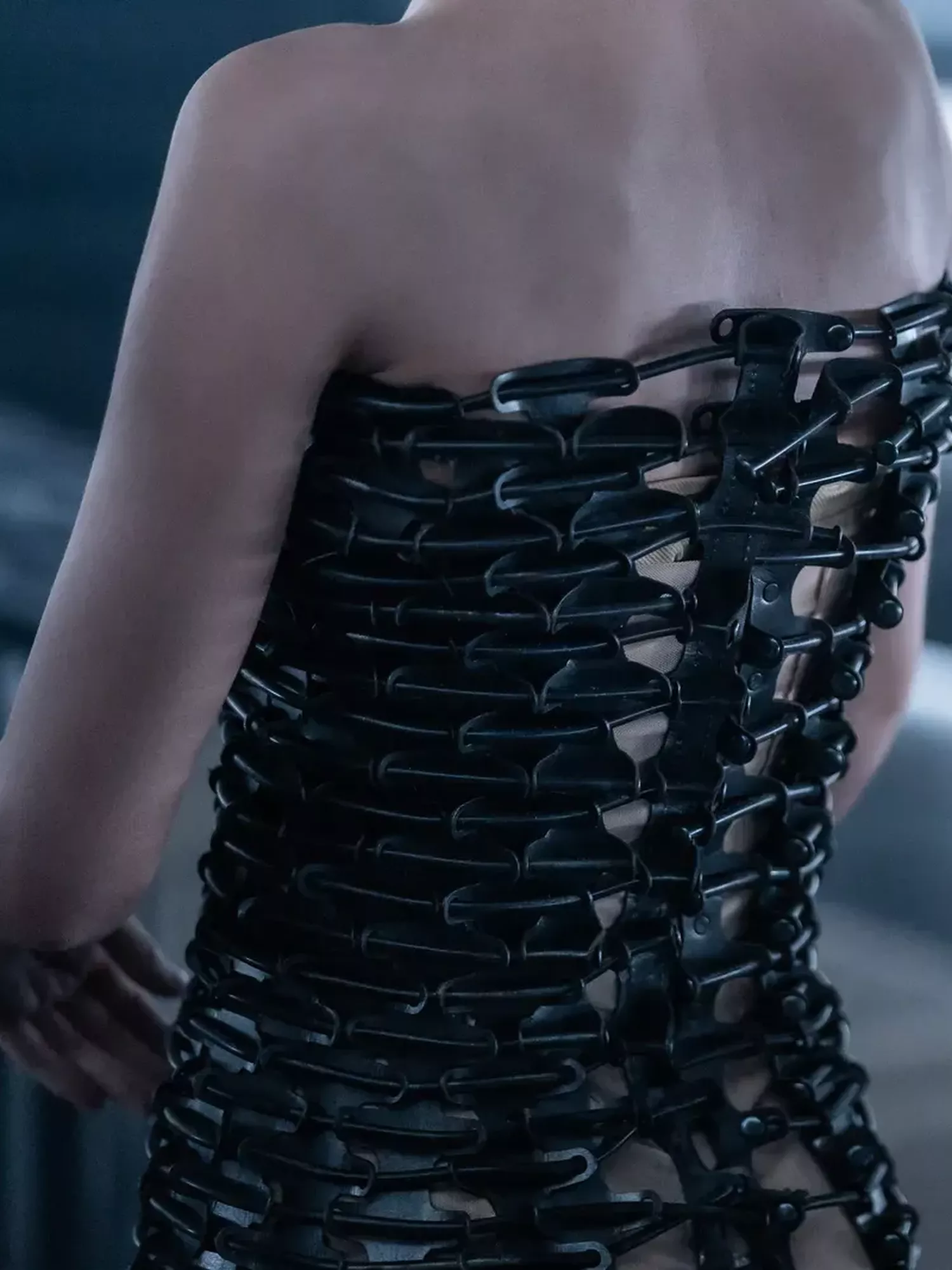
Details on the Harkonnen costumes . Photo: Niko Tavernise
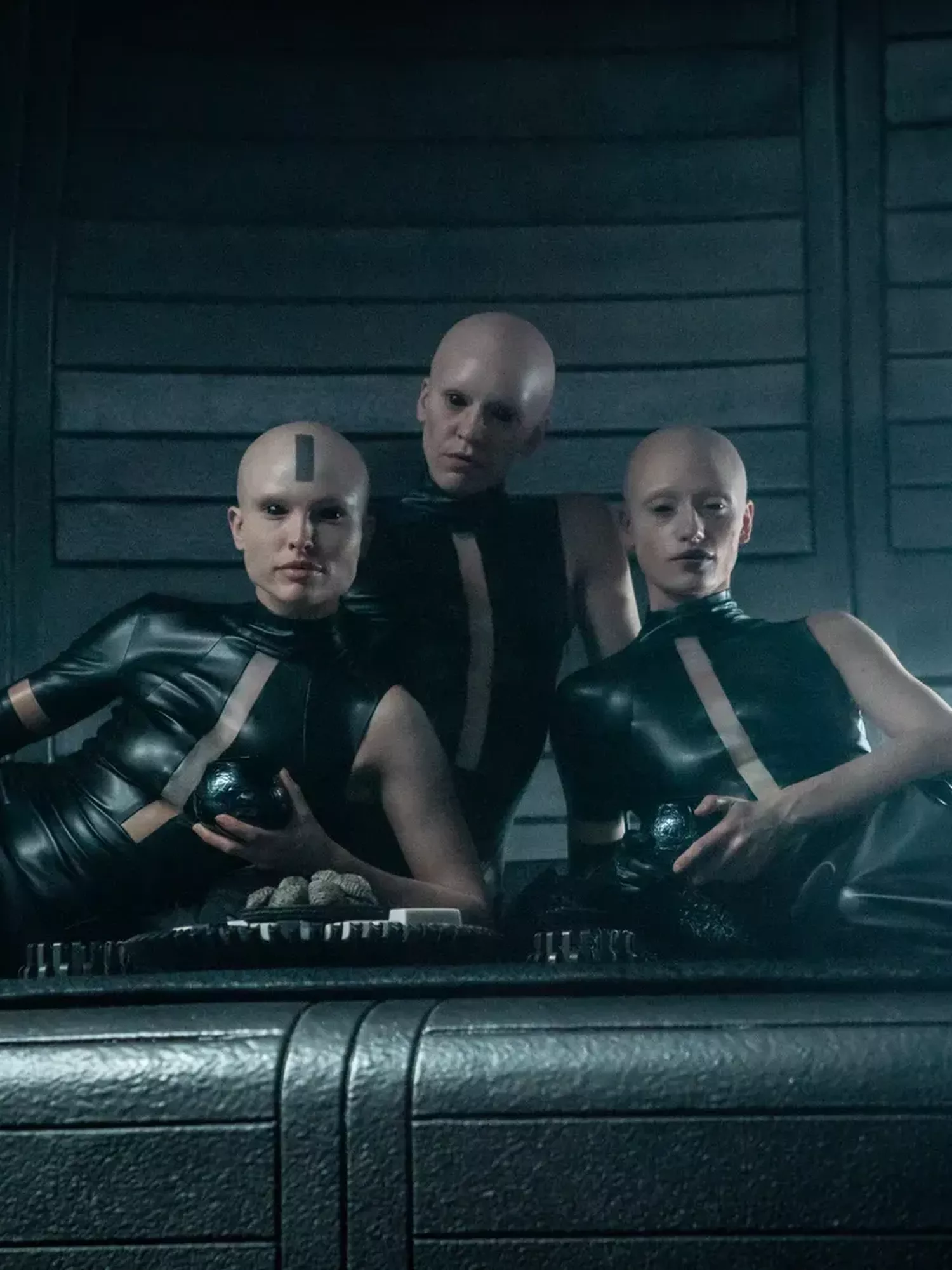
The Harkonnens. Photo: Niko Tavernise
The Harkonnens are sartorially linked by lots of black, leather, and spandex. “It’s quite sinister. There's a vampire quality to it. I drew a lot from the art of Geiger. It’s very, very, very gothic,” West says. “I drew on really dark medieval images, like dark nights and dark armour and all the embossed leather. It is quite bondage-y.”
West, a trained art historian, cites the Dune author himself when discussing her approach to costuming such a broad universe. “Frank Herbert always said to understand the future, you have to look at the past,” she says. “And I think Dune is the world starting over after some kind of apocalypse.”
Originally published on Vogue.com.
